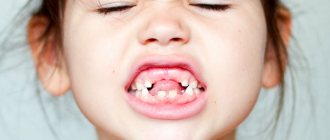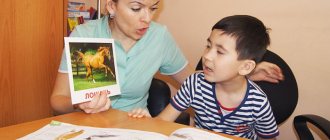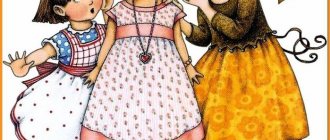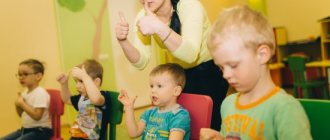The topic is quite deep and important. As one of the famous psychologists said: “the most important time for memory development is the time before school.” Indeed, the development of memory and attention in children is both an educational and interesting process. And if you have interesting programs and a computer, then you can turn learning into an exciting game. Let's see what we can offer our children to develop these basic skills, which will be very useful at school and will be useful in life.
How memory works in children
A child remembers information in two ways:
- Voluntarily - when the child specifically learns a poem. Motivation is important here.
- Involuntarily - the child remembers what he pays attention to. Some things remain for a long time, while some fragments are immediately erased.
Once memorized, knowledge is stored in long-term or short-term memory. The goal is to bring them to a long-term state, and then reproduce them if necessary. It is easier to remember something with the help of associations. The child will recite the poem after seeing the drawing that illustrated it. Some things are supposed to be forgotten so that overload does not occur.
Causes of poor memorization
In practice, there are often cases where a child has memory impairment. This condition is characterized by the inability and inability of the child to preserve, accumulate and use information received by the child when interacting with the outside world.
There are many reasons for the development of this pathological condition. The following are the most common factors that negatively affect the development of memory in a child 8-11 years old, namely:
- constant stress and overwork, which negatively affect the general psychophysical state of the child,
- previous somatic diseases, as well as a consequence of seasonal hypovitaminosis,
- unsuccessful vaccination in early childhood,
- traumatic brain injury suffered by the child,
- development of various lesions in brain structures, including tumor growth,
- diagnosed delay in speech and general development,
- manifestation of acute and chronic circulatory disorders in the head, atherosclerosis, spasm of cerebral vessels and other pathological changes.
ATTENTION. It should be noted that in most cases, poor children's memory can be corrected and improved. In this case, in no case should this moment be ignored, since in the future poor memorability can lead to the development of psychosomatic, neurological and psychological problems in the student.
We carry out tests
You can test your ability to memorize, store and reproduce information yourself. There are several simple memory tests for this:
Luria test. This research technique will show how developed a child’s voluntary memory is; it is the most important element of the learning process. Conduct testing in a calm environment, preferably in a quiet room so that the child is not distracted. Ask your child to sit comfortably and try to remember the words. Call without undue haste (with a pause of 2-3 seconds) ten words that the child knows well, but they should not be logically connected. Example: cat, school, spoon, swing, forest, jam, car, sea, milk, elephant.
Then repeat the verbal series and give it a second try, this will give you the opportunity to understand which words the child “fixed” in his head in the second place. Thank him and postpone continuing the test until later. After an hour and a half, ask the child to remember what words you named, this will make clear the state of the ability to reproduce new information (delayed memorization).
If a child remembers 3-4 words on the first try, this indicates a normal ability to memorize. On the second attempt, a child with normal memory should reproduce at least 6-7 words. After an hour, the child should remember at least 6 words. With high memory abilities, the child will be able to name from 8-10 words after the second attempt, and with low levels - from 0 to 2.
Stages of memory formation
The types of memory of the new inhabitant of the planet appear gradually. The little person has just appeared, but already remembers how to make sucking movements - this is motor memory.
Read here: Child self-esteem - tips on how to build and raise children’s self-esteem
In six months the emotional one progresses, and the figurative one joins in next. Long-term appears after a year of life - the baby can remember where he was yesterday, who he met. By two, even more progress is made. The child develops an idea of the world, which he creates involuntarily.
Memory becomes voluntary at the age of five. This allows you to intentionally learn something with strong motivation.
Interesting features of children's memory:
- girls are more likely to demonstrate visual memory;
- motor progresses more rapidly in boys;
- long-term appears earlier in girls, but has more emotional overtones;
- Memorizing numbers is easier for boys.
TYPES OF MEMORY
To understand what exactly needs to be trained, you should briefly highlight the theoretical aspect.
Researcher Blonsky P.P. identified the following types of memory:
- motor;
- emotional;
- figurative;
- verbal.
Moreover, the process of memory development in a baby occurs in exactly this sequence.
In addition, the following types are distinguished:
- Short term. Remembering important information for a short time. For example, we saw a phone number, remembered it, and called. And after that, we won’t be able to remember, because the information was “erased.”
- Long-term. Storing data for a long time. Moreover, this is not necessarily just informative material - memories and impressions can be deposited, forming life experience.
Memory can be classified based on the use of a particular analyzer. There are such types of it:
- visual;
- auditory;
- tactile;
- emotional;
- verbal-logical.
Often several types are involved in the process of memorization, but, as a rule, one dominates in a person.
Workout
- There are rules and exercises for rapid memory development that will be useful for different age categories.
- You should tell your child how your day went and ask him.
- Reading books should become a daily tradition. Then ask them to retell what they read.
- To remember words and phenomena, use associations. If it is difficult for him to remember, choose a suitable parallel with his favorite cartoon.
- Excellent training in foreign language practice. If you start learning another language earlier, it will be easier later on.
Definition, processes
Memory refers to the ability to remember any information, as well as a general set of personal memories of all events that happened in life. It is based on three processes:
- Memorization. The first component is the process of generating information in the form of nerve impulses inside brain cells. At the same time, ways of receiving and extracting information appear, using the neuro-reflex connections formed by this process. New information is added to existing information, as a result of which a person develops associations between various phenomena and knowledge.
- Preservation. The second element is associated with the formation of an engram within the brain. It is a clear memorable trace that remains with a person for life. Extracting information from an engram can be difficult, but with the development of memory, the task becomes much easier.
- Playback. The third process is the use of information that was previously stored in memory. It allows you to quickly recall important data and conventions, which can make it easier not only to remember new information, but also to reproduce it.
Consolidation of information in memory always goes through all three stages, after which new data either quickly disappears or is stored for a long time. It depends on what type of memory was used in memorization.
Games and exercises
It is important to use games and exercises to develop memory from a very early age. You can even come up with them yourself, taking into account the stages of skill formation. With their help, learning becomes more interesting. The most difficult task will seem easy if the baby is involved. In addition, such entertainment results in a lot of pleasure and positive emotions.
Up to 3 years
Use games aimed at developing motor memory. When collecting cubes or pyramids, name their colors and let the baby repeat.
From the age of two, the missions become more complicated - searching for differences will do. Or put several items and remove one when the baby turns away. Invite him to tell him what is missing.
After two years, you need to retell the materials and ask questions about them.
Up to 5 years
The moment of imaginative and logical thinking comes. Ask them to describe the pictures, characterize the characters, and come up with stories about them. A fun game for this time of year is Zoo. Show your child cards with animals, and then list their names, but skip some animals. Next he answers - who is missing. Over time, the process becomes more complicated.
Preparation for school
This is the period of formation of short-term memory. The correct preparation option is logic tasks. Place the items in a row, then mix them up and ask them to put them back in their place. Increase their number each time. The child learns to do this instantly, without making mistakes.
Collect puzzles, but do not peek at the finished image. To avoid temptation, cut any picture yourself.
Primary School
The amount of information received during studies is very large. Abilities must progress sufficiently to be able to keep up with each lesson.
- Original crafts for the interior - the secrets of creating comfort in your home
How to teach a child to read: simple rules and tips for parents on how to teach reading at home
Exercises for children: a set of exercises for the youngest and schoolchildren
There is no need to memorize everything; more often than not, this sends the data to the short-term department, and you have to deal with the long-term part. There are still games. Make them solve puzzles, crosswords, and make logical chains of words.
Over 12 years old
The teenager at this time shows the highest level of abilities. He knows how to create images, build verbal connections and consolidate knowledge.
You shouldn't stop training. The previous methods are not suitable; the teenager will not show interest in them. But you still need to ask questions. Ask what happened today, what is in the school classroom, what color are the curtains, the walls.
Now, it’s quite simple to answer what ways you can develop a child’s memory. It is necessary to carry out a number of simple tasks and techniques in a timely manner so that in the future the child can boast of his success in learning.
Specialized techniques
To achieve the maximum effect, you need to develop memory using proven techniques and exercises selected in accordance with the child’s age. The most popular of them are the Glen Doman method and the Montessori method.
The Doman method is designed for children from approximately 6 months to three to four years. The essence of the method is that the child is shown an image with a caption and the words are spoken. Each lesson lasts a few minutes, you need to practice 3-5 times a day.
The Doman method has a number of features:
- classes are conducted in a comfortable environment;
- use a variety of materials for training;
- classes “through force” are unacceptable;
- the learning process must be regular and continuous;
- The activity is stopped before the baby gets tired and starts acting up.
The development of memory and attentiveness according to the Montessori system is that parents must give the child freedom within established boundaries. This means that the baby himself chooses from the available options for play exercises what he will do at the moment.
Exercises to develop attention for preschoolers (3-6 years old)
At this age, the child’s memory has features: mechanical or involuntary nature of memorization. In the absence of violations, everything that captivates and evokes strong emotions is easily absorbed. The simplest games with your baby are the ideal way to develop attention. Below are options for activities for children 3-4 years old:
- Place 4 objects in front of the baby. Let the baby turn away, remove one toy, ask him to name what is missing.
- Name your child three objects with the same letter. Ask to repeat. This develops attentiveness, increases vocabulary, and introduces letters.
- Learn simple dance movements and ask your child to repeat them exactly.
- Puzzles, mosaics, construction sets help develop perseverance.
- Use figures cut out of colored paper to create a house, train, car, etc. Say out loud the shape, color, and size of the parts of the applique.
To concentrate the attention of older children, games of checkers and chess are indispensable. Concentration is fostered by: games with mazes, solving puzzles, finding differences in pictures.
The author of the method for memory training, Shamil Akhmadullin, offers an effective complex for preschoolers:
- Attach letters cut out of paper to the wall clock . They should be located between the numbers. Ask your child to follow the second hand and, after the sign (clap your hands), name its location.
- The game “Before this I” is not only a useful brain exercise for children, but a pleasant ritual before bed. Ask your child to tell you in detail about the sequence of his actions in reverse order. For example, “I put on my pajamas, brushed my teeth, played, had dinner, came home from kindergarten with dad, etc.”
- The game “Cross out the letter” has a beneficial effect on the development of attention for children 6-7 years old. Print out the text or use old books. Give the task to cross out all the letters, for example, “o”, on the first page with a pencil. Complete the task with a stopwatch. An excellent result - no more than 3 missing letters on the sheet.
Folk remedies that improve memory
Often, problems with remembering are caused by a deficiency of any vitamins. To replenish them and stimulate the development of cognitive function, you can use natural remedies based on medicinal plants and a special diet. Massage will also help: it will ensure better blood flow to the head and improve blood supply to the brain.
Brain massage
Head massage is a technique in which the effect is exerted not only on superficial vessels, but also on those located deeply. Blood pressure is normalized. Thanks to the effect on biologically active points, the general condition improves. It is better if the massage is performed by a specialist, so as not to harm the child’s health through improper influence.
Long-term rinsing of the tongue will also benefit. The duration of the procedure should take from 5 to 10 minutes. When rinsing, excitation processes are activated. Brain activity improves.
Nutrition
To improve memory, a person should eat foods containing large amounts of magnesium, vitamins B and E, and Omega-3 fatty acids. You need to add fatty fish, broccoli, bananas, walnuts, spinach, carrots, and dairy products to your diet. The menu should regularly include dried fruits, baked apples and potatoes, vegetable salads with olive oil dressing, bananas, and nuts. Fresh fruits should be used as snacks. You are allowed to consume 2 shares of dark chocolate with a cocoa content of 70% or more.
Clover
Fill a 0.5 liter bottle to the top with clover flowers, add vodka and leave to infuse in a dark place for 14 days. Strain, use 1 tbsp. per day. The course of therapy is 3 months, then a break is taken for 3 weeks, after which the drug is taken for another 3 months. The entire course can be repeated after 3 years. The technique will not only strengthen memory, but also lower intracranial pressure.
Fresh pine buds
Buds that appear in early spring are suitable. You should eat a few pieces 2-3 times a day before meals. It will benefit not only children, but also adults, as it has a rejuvenating effect.
Elecampane
To prepare a natural medicine you need to take 1 tbsp. roots of the plant, pour 500 ml of vodka, then leave to infuse in a darkened room for a month. Shake the glass container periodically. You need to drink 1 tbsp. tinctures 3 times a day half an hour before meals. The duration of the course of therapy is 1 month.
Rowan bark
A decoction will bring benefits, which is best consumed in courses 2-3 times a year. 1 tbsp. crushed raw materials are poured into a glass (250 ml) of boiling water, after which it is simmered for 10 minutes over low heat. Then the broth is removed from the stove and allowed to brew for 6 hours. Strain. Take 1 tbsp. 3 times a day. The duration of the course is 3-4 weeks. It is recommended to carry out in the spring, when a lack of vitamins is especially common; in autumn and winter, during epidemics.
Blueberry
This berry is useful fresh. You can consume it a glass per day. In winter, when there are no fresh berries, you can add 1-2 tsp to porridge, cottage cheese or tea. jam. Frozen berries are also suitable: they retain most of the nutrients.
Ginger
Ginger tea will be beneficial. To make it, pour several slices of pre-peeled root (weight should be 10 g) with a glass of boiling water and let it brew for 15 minutes. You can add a few leaves of lemon balm or mint. Drink 1-2 cups daily. Adding spices to dishes will also benefit.
Sage
You need to use 1 tbsp. sage and mint: mix, place in a thermos, pour 2 cups of boiling water and leave to brew overnight. In the morning, filter the drink and take 50 ml 4 times a day before meals.
Everyone go swimming!
Study and memorize the details of a photo within one and a half minutes. After that, close it and answer the questions.
- Where does the action take place - on the beach or in the mountains?
- Are all women wearing swimsuits?
- Is there a man in the photo with his index finger raised?
- Are all the people in the foreground or is there someone in the background too?








